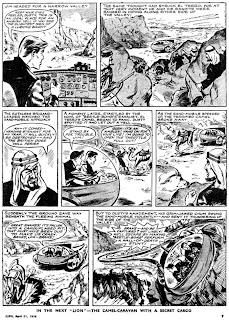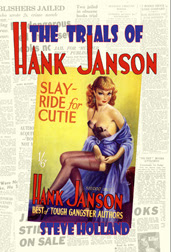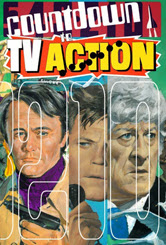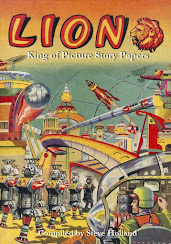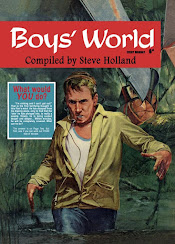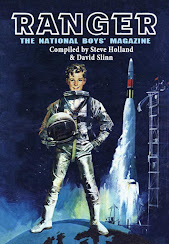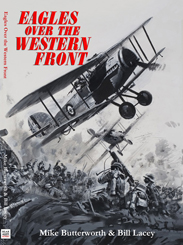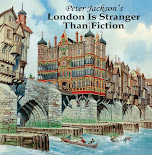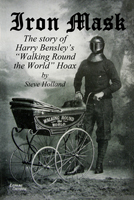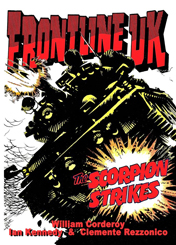Monday, October 29, 2012
Little known artists: Brian O'Hanlon
(* artwork © IPC Media.)
Sunday, October 28, 2012
Little known artists: F. A. Williams
(* artwork © IPC Media.)
Saturday, October 27, 2012
Little known artists: A. Forbes
In a number of cases, even when the names of the artists can be discovered, they mean little. They can be credited with a single strip or a cluster of strips from one title... but what they did before or after is unknown.
Here's a perfect example. A. Forbes has a handful of credits in Lion between 1956 and 1958, beginning with an adventures outing called 'The Desert Speedsters'.
But who was A. Forbes? Was (s)he Alison Forbes, a contemporary illustrator who may or may not have been from Australia? Her first known work (known to me, that is) is Animal Talk, illustrating a collection of stories by Neville Smith for Melbourne-based published F. W. Cheshire in 1955. She was then active in the UK in the late 1950s. Then she disappears from sight.
Here are a few examples of work by A. Forbes, whoever he or she may be. Why (s)he has an important place in the history of Lion is something that I'll reveal in the upcoming revision of the Lion index. In the meantime, if you know anything about this mysterious artist, let me know.
Next... who the hell was F. A. Williams?
Friday, October 26, 2012
Comic Cuts - 26 October 2012
This is the research phase for the next index. A few new names came to light a while back and I'll post a few examples over the next couple of days as we lead up to the Recent Releases and Upcoming Releases columns that will run next week. A lot of artists in the 1950s had a rather bland, uninspiring style and I'm not always confident in saying for sure that a particular page is by a particular artist – hence spreading around the scans.
That's not to say that all artists were nonedescript. I've actually discovered a couple of artists, like the guy who drew 'Flying Saucer Over Africa', that I rather like and hopefully I'll highlight some of them in the finished book.
So that was my week... painful, distracting, a bit depressing punctuated with a few moments of intrigue, interest and then another stab of pain which will pull me up sharp. I'm going to keep this short so I can go out for a walk.
Today's random scans were sent over by Richard Sheaf, who picked up a little run of old Hutchinson & Co. related titles published in the 1940s. The titles were published by a group of publishers in a uniform edition, including Grout, Hutchinson, Hurst & Blackett, Hodder, Jarrolds, John Long, Andrew Melrose, Rich & Cowan, Readers Library, Skeffington and Stanley Paul. (Phew!)
One of the most interesting things about these early books is that they printed sales information on the covers. First printings, for instance, often ran to around 30-40 thousand copies. The first paperback printing of No Orchids For Miss Blandish was 16 thousand and there were printing noting 56th thou., 81st thou., 106th thou., 164th thou., 189th thou., 217th thou., 242nd thou., 367th thou. and 470th thou. Amazing sales over a period of only a couple of years.
We have some "little known artists" columns coming up over the weekend and, as previously mentioned the recent and upcoming releases columns. Get your orders in for Christmas now!
Thursday, October 25, 2012
Commando Artists
It's amazing to think that a mere 144 artists have produced the 4,545 issues of Commando. Of course, there have been plenty of reprints over the years, but Commando has still published a great many original stories over the years and continues to produce them at the rate of two new yarns every fortnight. Some artists, notably Gordon Livingstone and Cecil Rigby, spent most of their artistic careers working on Commando and even some European and South American artists – Jose Maria Jorge, for instance – were better known in the UK than in their native countries.
A listing of Commando authors can be found here, which includes some links to interviews. The official website can be found here.
Aguilar
Juan Gonzalez Alacreu
Algarra
Matias Alonso [Matias Alonso Andres]
Jeff Anderson
Mick Anglo
Luis Arcas
Victor Hugo Arias
Asian
Raphael Auraleon
Martin Baines
Dan Barnfield
Ken Barr
Bea
Bellalta [Jose Maria Suarez Ballalta]
Benet [Manuel Benet Blanes]
Luis Bermejo
Jordi Bernet
Bevia [Aurelio Bevia Pascual]
Bielsa [Jose Maria Fernandez Bielsa]
Blasco
(Jaime?) Blasco
James Bleach
Rafael Boluda
Armando Bonato
J. P. Bridson
Bujeiro
Alan Burrows
Buylla [Adolfo Alvarez Buylla]
Campanillo
Jaime Marzal Canos
Carmona
Carrion [Felix Carrion Cenamor]
Roberto Casarrubio
L. C. Castello (see Castello Lucas)
Castro
Juan Manuel Cicuendez
Collado [Luis Collado Coch]
Mike Collins
Correa [?Antonio Correa]
Cortes / Cortez [Alfredo Sanchis Cortes]
Cruz [?Carlos Cruz]
Francisco Cueto
Juan Dalfiume
Gustavo De Feo
Jose Luis de la Fuente
Ramon de la Fuente
Victor de la Fuente
De la Rosa [Felipe Jimenez De la Rosa]
Domingo [?Jose Antonio Doningo Benabeu]
Elias
Enriquez [?F. Enriquez]
Escandell [?Juan Escandell Torres]
Juan Fernandez
Ferrandiz
Ferreira
Arthur Fleming
Peter Fleming
Flores [Jesus Flores Thies]
Peter Ford
Jaime Forns [Jaime Forns Bargueño]
Peter Foster
Franch [?R. Franch]
Leone Frollo
Guillermo Galeote
Galindo
Diego Garavano
Amador Garcia [Amador Garia Cabrera]
Xuasus Garcia
Ricardo Garijo
Phil Gascoine
German
Giralt [Juan Giralt Banus]
D. S. Gomez
Gonzalez
Gonzalez
Josep Gual
Guerrero [?Antonio Guerrero Pinin]
Daniel Haupt
Huescar [Jose Antonio de Huescar]
Ibanez [Vicente Ibáñez Sanchís]
Sandy James
Jimeno [Justo Jimeno Bazaga]
Jones [?Geoff Jones]
Jose Maria Jorge
Kennedy
Cam Kennedy
Ian Kennedy
Khato [Enrique Eduardo Campdepadros]
Kincaid
Andrés Klacik
Gordon Livingstone
Llops
Lombardia [Jose Fernandez de Lombardia]
Solano Lopez
L. Castello Lucas
L. S. Lucas (?see Castello Lucas?)
Macabich [Jordi Macabich Potau]
McIntyre
Denis McLoughlin
Maidagan [?Federico Maidagan]
Alejandro Garcia Mangana
Graham Manley
Janek Matysiak
Medrano [Julio Cesar Medrano, a.k.a. A. Martinez]
Alejandro Perez Mesa
Mira [Luis Martinez Mira]
Isidre Mones
Mario Morhain
Daniel Müller (Argentina)
Navarro [Agustin Navarro Costa]
Nebot [Josep Nebot Alegret]
Ricardo Luis Olivera
Paolo Ongaro
Ortiz
Leopoldo Ortiz
Keith Page
Terry Patrick
Perez
Perkins
Salvatore Pezone
F. A. Philpott
Carlos Pino
Jose Garcia Pizarro
Esteve Polls [wikipedia]
Pueyo [A. Pueyo]
Aldoma Puig
Miguel Quesada
Ramos [?Luis Ramos Santos]
Repetto
Clemente Rezzonico
John Ridgway
C. T. Rigby
Roca [Luis Martinez Roca]
Rodrigo
L. Rosell
Roux [Guillermo Roux?]
Ruiz [Alejandro Martinez Ruiz]
Alberto Saichan
Angel Salmeron
Martin Salvador
D. Sanchez / Sanches
Savi
Segrelles [Eustaquio Segrelles Del Pilar]
Keith Shone
Sio [Enric Sio Guardiola]
Solbes [?Enric Solbes]
Ferran Sostres
Szilagy [?Silvestre Szilagyi]
Ferdinando Tacconi
Loredano Ugolini
Usero [Adolfo Usero Abellan]
Vasquez
Horacio Raul Vila
Marc Viure
Watson
Jim Watson
Gary Welsh
Mike White
Williams
Patrick Wright
Wynne [?Doug Wynne]
Juan Zanotto
Manuel Zatarain
Wednesday, October 24, 2012
Tuesday, October 23, 2012
Monday, October 22, 2012
Sunday, October 21, 2012
Saturday, October 20, 2012
Friday, October 19, 2012
Comic Cuts - 19 October 2012
I'm pleased to say that copies of Sexton Blake Annual 1941 are now shipping out and should be with the folks who pre-ordered the book shortly, if they haven't already arrived. The next, final, volume is complete. I still need to get a proof done, but I've had no troubles with the first three so I'm not anticipating any problems. I'll post details of how to order in a few week's time in advance of publication at the end of November.
So with the latest two Bear Alley Books now published, that left me free to start writing an article for the next volume of Del Tebeo al Manga, which will be appearing some time next year. My contribution, about British graphic novels, is only a tiny part of the whole book and strictly limited to 15,000 characters (including spaces), or around 2,400 words. From which you can work out that the average length of a word I've used in the article is 5.2 letters. What you're going to do with this information I've no idea. Just let it be for the good of mankind and not for evil.
My first draft ran to 3,100 words, and I thought I was being quite good at cutting the fat as I was going along. I managed to trim and trim and trim it down further until I hit the correct length. Phew!
So I'm now working on a future Bear Alley Book. I now have various projects that I dip in and out of and I usually reach a tipping point on something that tells me that's the next book and I need to work on it flat-out. Two of them are indexes, one is the long-time-coming Mike Western book and the last is a comic strip reprint. All four are at various stages of development and I'm hoping to have one or other of them finished next month, although that depends on what other work comes in (work's a bit thin on the ground at the moment!).
Random scans this week begin with a rather poor effort from Hamilton & Co. "We never publish a dull story" they claim... but they did publish the occasional dull cover.
Three from Corgi. I couldn't think of a theme, so I picked numbers: 100 (Above Us The Waves), 500 (Kon-Tiki) and 1,500 (Catch 22). The two painted covers are by Corgi's master of cover art, John Richards.
Next week: the conclusion of The Hunchback of Notre Dame.
Thursday, October 18, 2012
Wednesday, October 17, 2012
Tuesday, October 16, 2012
Monday, October 15, 2012
Sunday, October 14, 2012
Fifty Years in the Fiction Factory: The Working Life of Herbert Allingham
Herbert Allingham was one of hundreds of writers who helped fill the pages of magazines, papers and comics during the heyday of cheap periodical publishing. Most of his fellow–hacks lived, and died, in obscurity, but thanks to a bit of good fortune, in that Julia Jones was given access to 16 boxes of Allingham’s diaries, account books, letters, manuscripts and published stories, we now have not only a biography of Allingham but also a unique insight into the relationships between writers, editors and readers.
Allingham was born in 1867 to James Allingham, founder of the Christian Globe, a non–denominational one penny monthly newspaper, which Herbert later edited for a while. His first earnings as a writer were for a serial he contributed to the New Boys’ Paper, a weekly story paper launched by his uncle, John Allingham (better–known as “Ralph Rollington) in 1886. In 1889, he became editor of the London Journal, founded in 1845 by George Stiff, and one of the foremost fiction–based periodicals of its time.
But it was a writer that Allingham found his bread and butter. He contributed stories and serials to both the Christian Globe and the London Journal; he found work as an advertising copywriter; he wrote numerous stories for boys’ story papers, most notably the Aldine Publishing Company’s True Blue and then for many of the papers and comics issued by the Amalgamated Press; and finally for women’s magazines such as the Family Journal, Home Companion and Poppy’s Paper.
All this is delineated in some detail – not for nothing is this biography sub–titled The Working Life of Herbert Allingham. But the book offers far more than just a chronological account of Allingham’s fiction. There are valuable insights into how one serial was re–used and re–packaged, depending on the readership of the periodical it was being published in. (Julia Jones identified 98 full–length serials which were published at least 299 times in various formats – reprinted, abridged, re–written – in at least 58 different publications). This is partly explained by changing social conditions and attitudes, coupled with the effects of the First World War, new roles for women, the rise and fall in disposable incomes, the whims and preferences of editors, and the internal politics of the Amalgamated Press, all of which are explored in some detail and which help place Allingham’s work in context.
There are also revelations about authors’ fees and the occasionally unscrupulous methods used by editors to limit their financial outlay. Finally, and no less importantly, Julia Jones also looks at the readers of Allingham’s stories – who they were, what they did, what they earned, and how he and why his relationship with them changed over the years.
Allingham died in 1936. None of the periodicals for which he wrote mentioned his death. Like almost all of his contemporaries, he died with no public recognition. As almost all of his output was anonymous, or written under pseudonyms, he never really existed as a “real” person. Now, thanks to this biography, he does.
Fifty Years In The Fiction Factory: The Working Life of Herbert Allingham by Julia Jones. Chelmsford, Golden Duck (UK) Ltd. ISBN 978-1-899262-07-6, 388pp, £17.99.
Saturday, October 13, 2012
George Bruce
According to the Fictionmags Index he was a "Popular author of World War I stories; the person for whom the pulp magazines George Bruce’s Squadron and George Bruce’s Contact are named. Additional biographical data on him have not been located, but he is known to have written screenplays for Hollywood motion pictures. Not to be confused with Scottish poet George Bruce (1909- ).
The FMI has a long list of stories dating from the period 1927-1940 written by Bruce for flying, sporting and action pulps, including Air Stories, Wings, Action Stories, Fight Stories, Over the Top, Aces, Airplane Stories, Street & Smith's Air Trails, The Lone Eagle, War Birds, as well as contributions to Adventure and Argosy. Bruce also wrote crime stories for Gangster Stories, Black Aces, Popular Detective, Detective Tales and Thrilling Detective, amongst others.
George Bruce was such a popular writer of air war stories that his name was attached to several titles: George Bruces's Aces (1 issue, 1931), George Bruce's Air Novels (1 issue, 1931), George Bruce's Sky Fighters (1932). The latter title was published by Langley House and then continued by Standard Magazines as Sky Fighters from July 1932, with Bruce writing the lead novel until June 1933. Bruce seems to have fallen out with Standard as Adventure House began publishing two titles based around Bruce's writing: George Bruce's Contact and George Bruce's Squadron, both of which ran 11 issues between August 1933 to June 1934. Bruce's name was then dropped and the two magazines combined, although Squadron, incorporating Contact, lasted only 3 issues between July and September 1934. Bruce continued to contribute. Sky Fighters paused briefly after Bruce's defection but was relaunched in October 1933 with Arthur J. Burks as its chief writer. Bruce returned in July 1934.
I believe that a radio show, George Bruce's Air Stories of the World War, was also broadcast around 1932.
In 1936, The William Caslon company published Navy Blue and Gold, a story of the Naval academy, at the time Bruce's address was given as Interlacken, New Jersey.
In 1937, Bruce's novel Navy Blue and Gold was filmed – starring James Stewart and Robert Young – by M-G-M. Bruce also wrote the screenplay and began writing a number of films each year, including She's No Lady (1937), The Crowd Roars (1938), The Man in the Iron Mask (1939), Kit Carson (1940), The Son of Monte Cristo (1941), The Corsican Brothers (1942, starring Douglas Fairbanks Jr.) and dozens of others. Bruce even directed one of his screenplays, a western entitled Fury in Paradise (1955) starring Peter M. Thompson, for a Mexican company, Henri A Lube Producciones.
In the 1950s, like many Hollywood screenwriters, he also contributed to television, including Crossroads, Playhouse 90, The Lawless Years, The Detectives. His last credits appeared in the early 1960s, his last major screenplay being a version of Beauty and the Beast (1962) starring Joyce Taylor and Mark Damon.
The IMDb notes that Bruce was born in Danville, Pennsylvania on 15 September 1898 and died, aged 75, in Riverside County, California, on 6 September 1974.
Copyright records also give Bruce the birth year 1898 and we can find a few additional traces of him.
In February 1931 there is a record of George Bruce travelling from Bermuda to New York, his birth place given as Philadelphia, PA, and his date of birth given as 15 September 1895. Anyone who has followed my research here on Bear Alley will know that variations in records are almost as common as there are records. Indeed, trying to track down authentic info. is one of the reasons that I set up Bear Alley in the first place.
But, variations aside, the Pennsylvania birth place and 15 September birth date make it 99% certain that we're talking about the same guy who is listed on the IMDb. There's some further evidence which we'll come to shortly.
What's interesting is that George is married. His wife, Gertrude (b. Sparrow Bush, N.Y., 28 November 1898) and son Thunder (b. New York City, 25 December 1928) are also listed, as is Joan Skinner (b. Sparrow Bush, N.Y., 3 June 1913). All four are given the same home address: Bar-37 Ranch, Prescott, Arizona.
The 1930 census also includes George and Gertrude but with some intriguing differences. George, aged 37 [i.e. born c.1893] is the co-partner in a dude ranch in the Prescott National Forest. He had married Gertrude (31, i.e. born c.1898) at the age of 34 – she was 28, so 3 to 4 years earlier. Their son is listed as Boris Bruce, aged 2, born in Arizona.
The ranch was co-owned with Edgar M. Andrews, 34-years-old and born in New Jersey; also at the same address is Edgar's mother Beigh L. Andrews (65) and Jean Skinner (17)... who was also on the travel manifest, so there can be no doubt that George, Gertrude and Boris (!) are the same folk as George, Gertrude and Thunder.
Incidentally, he really was called Thunder. His full name was George Thunder Bruce and his date of birth appears to have been 24 December 1927; he died on 24 December 1994 in Oregon.
In 1940, Edgar M. Andrews (45), newly married to Frances E. Andrews (33), is still a cattleman and running a ranch in Yavapai, Arizona. George, of course, has moved on. If you'll recall, he had begun his Hollywood career in around 1937 and moved to Los Angeles. George is listed as being a 42-years-old producer in the motion picture industry and was living with his wife Mitzie, a 28-year-old born in Hungary.
Gertrude and her son, now listed as George, were also living in Long Beach, Los Angeles. Gertrude may have been the Gertrude Bruce (listed as born 29 November 1898) who died in Alexandria City, Virginia, in January 1984.
1930 is the earliest I have been able to track Bruce with any certainty. In the 1910 census there is listed a 10-year-old George Bruce, son of James and Mamie Bruce. James was a piano tuner and the family were from Pennsylvania and living in Pittsburgh. There was an older brother named Joseph, plus younger siblings Elizabeth, Charlotte, Robert and Arthur. However, I believe that this George Bruce was still living in Pittsburgh in 1940.
He might be the George P. Bruce, who in the 1910 census was a 15 years old (born in Pennsylvania, c.1895) living with his grandmother (Mary J. Nelson) in Pittsburgh. There's no way of checking, unfortunately.
PUBLICATIONS
Novels
Navy Blue and Gold. A story of the Naval academy. New York, The William Caslon Co., 1936.
Claim of the Fleshless Corpse. New York, Dodge Publishing Co., 1937; as Corpse Without Flesh, London, Jenkins, 1938.
Collections
Too Tough to Die. A Red Lacey detective novel. New York, The William Caslon Co., 1936.
Others (related)
Salute to the Marines, novelization by Randall M. White, from the screenplay by George Bruce. New York, Grosset & Dunlap, 1943.
Friday, October 12, 2012
Comic Cuts - 12 October 2012
Every now and then there are weeks that are so dull that you really can't find anything in them to write about. I've had that kind of week. Even in a life as dull as mine, this week has been particularly dull.
Tuesday was especially tedious. I get up around 6.30 usually and Mel leaves the house at 8.00 to get to work, so I usually try to take a look at the newspapers online before she comes downstairs for breakfast – we usually sit around chatting for half an hour and then she'll sort out what she needs to sort out before leaving the house. It's a routine we've fallen into.
So I try to start work at 8.00, although sometimes I'm still looking at the papers, reading e-mails, looking at Facebook or whatever else I can find to distract me. On Tuesday I got off to a good start on the day's work, which just happened to be cleaning up scans of the fourth Sexton Blake Annual. By 10.30 I had done three pages. Three. You could ignore your thumb and still not use up all the fingers on one hand to count the number of pages I'd finished.
These were tough pages. When I launched into this project I knew that I had two reasonable annuals and two that were in very poor condition. It's one of the reasons I thought of reprinting them in the first place. The 1941 and 1942 looked like they had been used as place mats by someone who liked coffee but had an incredibly unsteady hand. Getting the opening pages to look presentable took some doing...
...but I think I've made a reasonable job of it. A little bit of further tinkering and I was quite chuffed with the results.
Anyhoo, the amount of work required on each page – not all of them as bad as the one pictured, although I also had to deal with some torn pages, too – meant that the work dragged on later into the week than I had hoped, and I had a second set of scans that also needed cleaning up. And, if you hadn't noticed, we have been running some more illustrations from World of Wonder all week, which took most of the weekend to scan and clean up... so I have been doing the one repetitive job for five days solid.
Now you see why I'm saying this week has been particularly bad.
Today's random scan is an Ian McDonald special with four superb science fiction novels, three of which won the BSFA Award. More information about McDonald can be found at Wikipedia and the Science Fiction Encyclopedia, handily saving me some time.
Lined up for the weekend are some research into US aviation pulp writer George Bruce and a review of a book about story paper author Herbert Allingham.


















